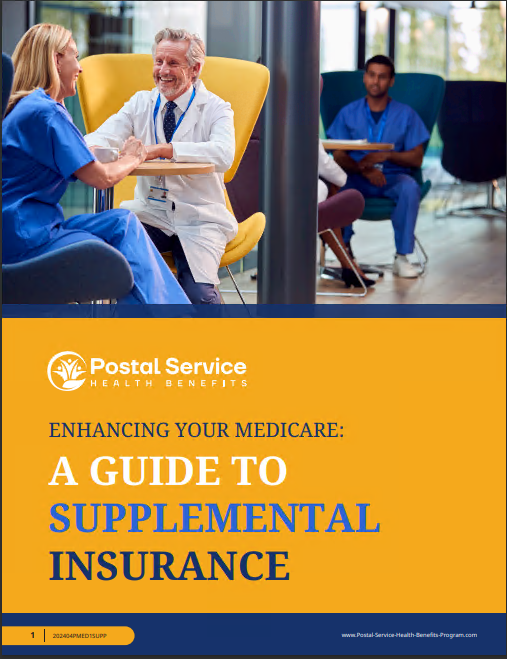Key Takeaways
- Retirees covered by the PSHB plan can enhance their healthcare benefits by understanding how Medicare integrates with it.
- Navigating Medicare enrollment alongside your PSHB benefits can optimize healthcare coverage and avoid potential gaps.
Retired and Covered by PSHB? Here’s How Medicare Fits In (And Why It Matters)
As a federal retiree or someone approaching retirement, understanding the relationship between your Federal Employees Health Benefits (FEHB) under the Postal Service Health Benefits (PSHB) program and Medicare is essential. Both provide significant coverage, but the key lies in how these two systems work together to provide comprehensive healthcare, particularly in your post-employment years. By strategically coordinating your benefits, you can ensure peace of mind and avoid any unnecessary gaps in coverage.
Understanding PSHB: A Crucial Foundation
For many federal employees, the PSHB is a central part of their healthcare coverage. It’s similar to the well-known FEHB program but is specifically designed for postal service employees and retirees. The coverage is robust, offering a variety of health insurance options. However, as you transition to retirement, you may begin to wonder where Medicare fits into this picture.
Once you retire, Medicare becomes available at age 65. If you’re already covered under the PSHB, you may question whether enrolling in Medicare makes sense, given that you already have extensive coverage. However, understanding how Medicare integrates with your PSHB plan can help you make informed decisions about your healthcare.
PSHB and Medicare: Complementary, Not Redundant
When it comes to Medicare, there are several parts to consider:
- Medicare Part A covers hospital care.
- Medicare Part B covers outpatient services.
- Medicare Part C (Medicare Advantage) provides an alternative way to receive Medicare benefits.
- Medicare Part D offers prescription drug coverage.
For those already receiving PSHB benefits, enrolling in Medicare may seem redundant. However, the combination of Medicare and your existing benefits can be more powerful than you might think. By enrolling in both, you could lower your out-of-pocket healthcare costs significantly and reduce the financial impact of major medical events.
Medicare Part A: A No-Brainer for Most
For retirees with PSHB coverage, enrolling in Medicare Part A is typically a straightforward decision. Part A generally comes without a premium if you’ve paid Medicare taxes for at least 10 years (40 quarters). Since it primarily covers hospital services, it works well with PSHB, which can cover other medical expenses. For most, this means a robust safety net that helps reduce hospitalization costs.
Why Medicare Part B Is Still Worth It
Medicare Part B covers doctor visits, outpatient care, and other services. While enrolling in Part B does come with a premium, there are several reasons why it’s beneficial to pair it with PSHB coverage.
One primary reason is that your PSHB plan may pay secondary to Medicare once you enroll in Part B. This means that Medicare will pay first for most medical services, and your PSHB plan can cover what Medicare does not. The result? Significantly reduced out-of-pocket costs for services like doctor’s visits, lab tests, and preventive care. Without Part B, you may end up paying more out-of-pocket because PSHB could reduce its benefits, expecting Medicare to cover its portion.
Part D: Should You Opt for Drug Coverage?
If your PSHB plan includes comprehensive prescription drug coverage, enrolling in Medicare Part D may not be necessary. Many federal retirees find that their PSHB plan’s drug coverage is more than adequate, often exceeding what Medicare Part D would offer. However, it’s important to evaluate your specific needs. If your PSHB plan has gaps in its drug coverage, Medicare Part D can help fill those voids.
Navigating the Transition: When and How to Enroll in Medicare
Timing your Medicare enrollment is crucial to avoid penalties or lapses in coverage. Here’s a breakdown of the key timelines you should be aware of:
- Initial Enrollment Period (IEP): Your IEP is a seven-month window that begins three months before the month you turn 65 and ends three months after. During this time, you can sign up for Medicare Parts A and B.
- General Enrollment Period (GEP): If you miss your IEP, you can enroll during the GEP, which runs from January 1 to March 31 each year. However, late enrollment penalties may apply, especially for Part B.
- Special Enrollment Period (SEP): If you’re still covered by an employer-sponsored health plan, you may be able to delay Part B without penalties. This SEP begins when your employment ends, allowing you to enroll in Medicare without facing a penalty.
If you are already receiving Social Security benefits, enrollment in Medicare Part A is automatic at age 65. However, enrolling in Medicare Part B is a decision you’ll need to make, especially in light of how it will work with your PSHB benefits.
The Role of Coordination of Benefits (COB)
Once you’re enrolled in both Medicare and PSHB, the two programs will work together to ensure you’re fully covered. This process is known as Coordination of Benefits (COB). Here’s how it typically works:
- Medicare as Primary Payer: Medicare will pay first for eligible services, covering its share based on the specific service.
- PSHB as Secondary Payer: Your PSHB plan will then pay for any remaining costs that Medicare doesn’t cover, such as copayments, coinsurance, and deductibles.
This coordinated approach ensures that you get the most out of both Medicare and your PSHB plan. In most cases, this reduces the total amount you would need to pay out-of-pocket for healthcare services.
Why COB Matters
Failing to coordinate your PSHB and Medicare coverage could result in paying more than necessary for your healthcare. By ensuring both programs are working together, you can maximize your benefits and minimize unnecessary expenses. Additionally, COB reduces the risk of denied claims or unexpected medical bills, giving you peace of mind as you navigate retirement.
Key Considerations When Deciding on Medicare Enrollment
While the combination of Medicare and PSHB benefits can provide excellent coverage, there are a few key considerations to keep in mind:
- Costs: Even though Medicare Part A is usually premium-free, Part B comes with a monthly premium. Weighing this cost against the potential out-of-pocket savings from reduced coinsurance and deductibles is crucial.
- Coverage Needs: Consider your current health status and any anticipated medical needs. If you expect to require more frequent outpatient care or specialists, enrolling in Medicare Parts A and B could save you money in the long run.
- Prescription Coverage: Review your PSHB plan’s prescription drug benefits. If they are comprehensive, you may not need Part D, but if there are gaps, Medicare Part D could be beneficial.
- Penalty Avoidance: Enrolling in Medicare on time can help you avoid penalties that increase your premiums for life, especially with Part B.
Ensuring Comprehensive Healthcare in Retirement
Coordinating your PSHB coverage with Medicare offers retirees a safety net that ensures comprehensive care without the financial burden. By understanding how these two systems interact, you can make informed decisions and optimize your healthcare during retirement.
Remember, Medicare works best as a complement to your existing PSHB coverage. With the right combination, you can access an array of medical services while minimizing your out-of-pocket costs. Whether you decide to enroll in both Medicare Parts A and B or only Part A, knowing the benefits of each option will help you plan for a financially secure and healthy retirement.
Wrapping Up Your Coverage Strategy
Navigating healthcare in retirement doesn’t have to be confusing. By understanding the role of Medicare alongside your PSHB coverage, you can ensure that you receive the best possible care while protecting your financial security. The key is to evaluate your options carefully and consider both your current health and future needs.
Contact Information:
Email: [email protected]
Phone: 4143222106






